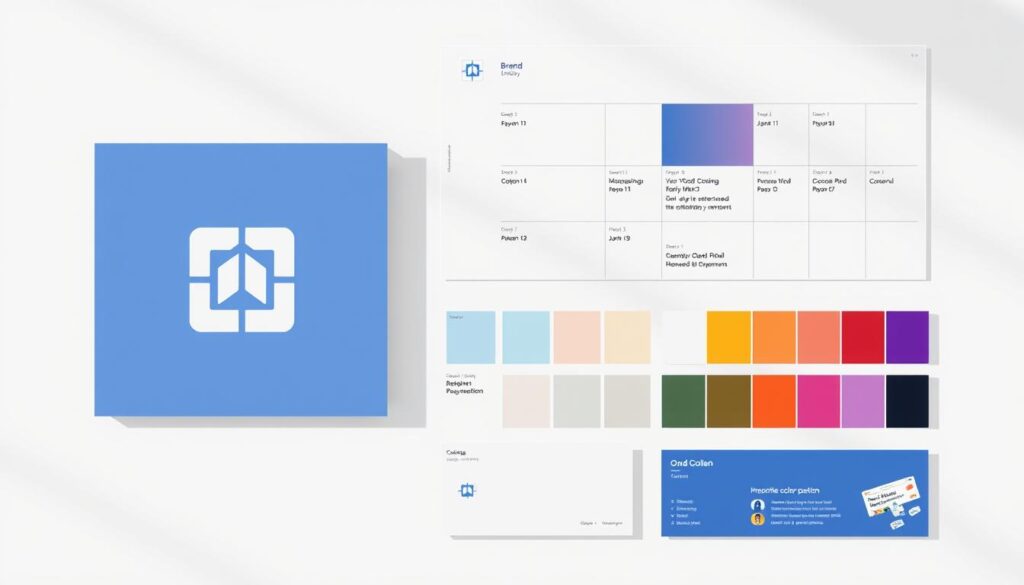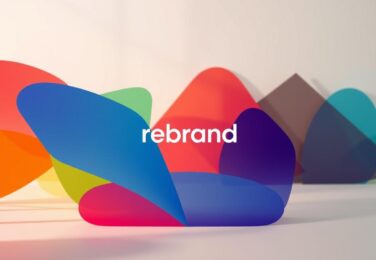Why Brand Consistency Matters Across All Platforms

Table of Content
Remember walking into a David Jones store in Sydney? It felt familiar, thanks to their Instagram and website. This seamless experience made us trust them more and want to return.
Brand consistency is key for businesses today, as shown by Deloitte and McKinsey. It boosts recognition, trust, and keeps customers coming back.
Customers switch between mobile, web, retail, and service channels easily. Having a consistent brand is not just nice; it’s necessary. Without it, customers lose trust and loyalty.
We provide steps and tools to keep your brand message consistent. This includes using local experts in Sydney to make it work for your business.
If managing your brand’s look across channels is tough, reach out to hello@defyn.com.au for help.
Key Takeaways
- Consistent brand identity builds recognition and perceived professionalism.
- Multi channel branding reduces friction as customers move between touchpoints.
- Structured governance and tools make consistent brand messaging achievable.
- Local expertise, such as brand strategy experts Sydney, helps adapt consistency to market nuances.
- Measurement and audits are essential to find gaps and protect brand equity.
Understanding Brand Consistency Across Platforms
We explain what brand consistency across platforms means for business leaders. This section breaks down key elements into actions you can take. We aim to help teams align visual design, messaging, and service so customers meet the same brand at every touchpoint.
Defining brand consistency and its core elements
What is brand consistency? It’s the consistent use of visual identity, messaging, tone, and customer experience across all touchpoints. Key elements include logo usage, colour palette, typography, imagery style, brand voice, value propositions, service standards, and product presentation.
We suggest documenting each element with clear rules. Use logo files, Pantone or CMYK values, font families, and image guidelines. Create examples of correct and incorrect uses to help teams learn quickly.
How brand identity translates across digital and physical touchpoints
How does brand identity move from web to store? Digital assets need to be adaptive but consistent. This means responsive logos, component libraries, and style sheets for websites, apps, email, and social media. These reduce duplication of effort and speed up launches.
Physical touchpoints require technical specifications for colour matching, materials, and production tolerances. Packaging, retail signage, and uniforms must follow the same visual system. This maintains coherence when customers switch between channels.
Service touchpoints demand scripts, CX standards, and role-based training. Call centres, in-store staff, and delivery teams translate brand identity into behaviour. We suggest role play and checklists to keep interactions consistent.
Common inconsistencies that damage customer trust
What mistakes break trust? Visual mismatches like different logos and misapplied colours create confusion. Messaging drift with conflicting taglines or offers undermines promises. Functional gaps where a website offers features staff cannot fulfil lead to disappointment.
Technical inconsistencies also harm the customer experience. Poor responsive design, broken tracking, and inconsistent personalisation produce a disjointed journey. These issues reduce conversion and weaken loyalty.
Practical takeaway: start with a brand audit to catalogue current assets and identify gaps between digital and physical delivery. This audit becomes the roadmap for aligning brand identity, consistent brand messaging, and multi channel branding across the organisation.
multi channel branding: Integrating Your Brand Everywhere
We help Australian businesses create a unified experience across different platforms. This means making sure customers have the same experience whether they shop in Bondi or on their phone in Cairns.
So, what does this mean for local retailers and services?
We make sure e-commerce promotions match what’s offered in stores. Social campaigns are matched with in-store events. We design templates that keep the brand message consistent but allow local teams to adapt for different areas and time zones.
What multi channel branding means for Australian businesses
Australia’s vast distances and strong retail culture make integrating channels essential. We ensure campaigns are consistent whether in a Melbourne shopping centre or online. This includes following the Australian Privacy Act for customer data across all channels.
Channel-specific considerations: social, retail, web and email
Social media needs creative that can be adapted quickly. Reels, Stories, and carousels require templates that keep the brand’s tone and identity. Profile handles, bios, and pinned posts must also reflect the brand’s voice and moderation rules.
Retail requires consistent signage, window displays, and merchandising that match digital promotions. Staff training and point-of-sale messages help deliver consistent brand messaging at the moment of sale.
Web platforms need a shared design system and a component library. They must also follow WCAG accessibility guidelines. Fast load times and clean analytics tagging protect data quality and support brand consistency across platforms.
Email relies on consistent templates, clear headers and footers, and correct legal wording. Tagging for segmentation must match CRM rules so personalised messages align with our overall brand tone.
Measuring effectiveness across channels
We track unified KPIs like brand awareness lift, NPS, conversion rate, average order value, and repeat purchase rate. We use multi-touch attribution to see which channels are most effective.
Cross-channel dashboards and strict tag governance keep data reliable. This allows us to compare campaigns and scale successful templates without losing channel-specific branding quality.
Here are some practical steps we recommend:
- Prioritise channels with the highest revenue and engagement.
- Build reusable templates for social, web, and email that allow small local edits.
- Train retail teams on how POS messaging links to online offers.
- Set a data governance plan to protect customer privacy and ensure clean analytics.
| Channel | Key Focus | Metrics | Practical Action |
|---|---|---|---|
| Social | Flexible creative, profile consistency, UGC moderation | Engagement rate, share of voice, campaign reach | Deploy templated formats for Reels and Stories; align bios and pinned posts |
| Retail | Signage, merchandising, trained staff | Conversion at POS, foot traffic, AOV | Sync in-store displays with online promos; staff scripts for offers |
| Web | Design system, accessibility, analytics tagging | Load times, bounce rate, conversion funnel | Maintain component library and WCAG checks; implement tag governance |
| Template consistency, legal headers, segmentation tags | Open rate, CTR, repeat purchase rate | Standardise headers/footers and tagging for personalisation under privacy rules |
Why Consistent Brand Messaging Drives Recognition
We explore how repetition shapes memory and why clear brand cues are key for growth. When customers see the same visual and verbal signals, their minds connect them to one idea. This makes it easier for them to remember your brand when it counts.
What makes a brand stick in our minds? The mere-exposure effect shows that repeated exposure boosts liking. Schema theory helps us understand how familiar signals are stored in mental shortcuts. These theories highlight the power of consistent brand messaging in building recognition over time.
Which elements should repeat? Visuals, tone, and core claims are essential. A strong brand identity includes logo use, colour rules, and a messaging hierarchy. This hierarchy outlines a core proposition, supporting messages, and proof points for each campaign.
Real brands show us how it’s done. Apple maintains uniform product imagery and tone across stores and ads. Coca-Cola uses a single visual system and voice worldwide. In Australia, Qantas and Woolworths align their campaigns across TV, web, and retail. These brands make it easier for customers to recall them because they see the same cues everywhere.
What results can you expect? Consistent teams often see higher unaided recall in surveys and better ad lift. Campaigns with a unified approach tend to convert more because recognition reduces hesitation. Multi channel branding amplifies these effects by reinforcing the same message across all touchpoints.
How should teams act? Create templates and creative briefs based on the messaging hierarchy. Train partners on acceptable variations and central approvals. Track unaided recall, ad lift, and conversion as your main measures of success.
Brand Identity: Visuals, Voice and Values
We show how to make brand identity easy to follow and use. This helps teams share the same message everywhere. We cover visual details, voice guidelines, and examples that keep the brand consistent.

Aligning logo, colour palette and typography across platforms
We give clear rules for logos, colours, and fonts. This ensures they look good in print and online. We also provide files for different uses and colour references for accuracy.
Key technical specs we recommend:
- Logo: primary (full lockup) and simplified mark; minimum clearspace = 20% of mark width; min size = 24px digital, 10mm print.
- Colour system: primary palette with hex/RGB and Pantone/CMYK equivalents; secondary palette for accents and accessibility contrasts.
- Typography: primary and secondary typefaces, web-safe fallbacks, weights for headings, body and captions.
- Adaptive assets: responsive SVG icons, PNG fallbacks for legacy systems, icon set with semantic names.
Crafting a consistent brand voice and tone for diverse audiences
We define voice and tone separately. Voice is the brand’s personality, while tone changes based on the audience and channel. This approach keeps the message consistent but feels natural in different contexts.
Voice definition: confident, helpful, plain language with precise technical cues where needed.
Tone examples by channel:
- Product pages: clear, benefit-led sentences. Example: “Save time with automated reporting and clear dashboards.”
- Social posts: conversational and concise. Example: “New update out now — streamlined reports for your team.”
- Customer service replies: empathetic and action-focused. Example: “We’ll investigate this and reply within one business day.”
- Legal copy: formal, unambiguous and concise. Example: “Terms apply as set out in the agreement.”
Dos and don’ts for copywriters and front-line staff:
- Do: use active voice, short sentences and brand-approved terminology.
- Don’t: copy marketing hyperbole or change product names without approval.
- Do: adapt tone for channel while keeping vocabulary consistent.
- Don’t: swap punctuation or casing styles that break brand patterns.
Embedding brand values into customer interactions
We turn abstract values into actions that customers can see. For example, “customer-first” means quick responses and clear paths for help.
Practical translations of values:
- Customer-first: first response within one business day; escalation script and SLA details in the brand hub.
- Sustainability: recyclable packaging specifications, supplier audit checklist and carbon reporting guidelines.
- Transparency: standardised billing descriptions, plain-language policy summaries and regular status updates during incidents.
Operational assets to enforce brand consistency across platforms:
- Single source of truth: a brand hub or digital asset management system with approved logos, colour specs and copy templates.
- Interaction scripts: documented templates for phone, chat and email that reflect values and tone.
- Training modules: quick reference cards for multi channel branding and refresher sessions for agencies and partners.
We suggest creating a clear brand guide. It should include visual, voice, and value guidelines. This makes things clearer, speeds up approvals, and keeps the brand consistent as teams grow.
Impact on Customer Experience and Loyalty
We explore how keeping a brand consistent across all platforms affects customers. A unified approach to branding makes interactions smoother. This smoothness increases the value customers see in each interaction.
Consistent experiences at every stage of the customer journey
At the start, social media, search results, and outdoor ads should all look and say the same thing.
When customers are thinking about buying, product pages, emails, and in-store staff must match in terms of price, benefits, and tone.
When it’s time to buy, the checkout process on the web, app, and in-store should offer the same deals and keep account data in sync.
After buying, confirmations, delivery updates, and support should match the brand’s promise in terms of tone and timing.
To keep customers coming back, loyalty programs, special offers, and follow-up service should all stay true to the brand’s message.
How consistency builds trust and repeat business
When interactions are predictable, customers feel less risk. Seeing the same standards across different channels builds trust in the brand.
This trust leads to more repeat business and a longer relationship with the brand. Clear, consistent messaging also helps keep customers from leaving due to unexpected issues.
We suggest using cohort analysis to see how consistent branding affects repeat purchases. Use behaviour segments to focus on the impact of aligned offers, service, and support.
Examples of loyalty uplift from consistent brands
Retailers who make it easy to join loyalty programs in-store and online see more people joining and staying engaged.
Australian travel brands that keep their booking confirmations, app updates, and baggage handling notices in line see better customer satisfaction and more repeat bookings.
To measure the impact, compare repeat purchase rates, average order value, and retention for groups that have seen consistency efforts. Even small tests can show big improvements when brands are consistent across platforms.
Here’s what we do:
- We document standard templates for touchpoints like awareness, purchase, and support.
- We make sure account and offer data is the same across web, app, and stores to avoid confusion.
- We do quarterly cohort analysis to see how loyalty changes after we’ve made things more consistent.
Operationalising Consistency: Systems and Processes
We build the operational foundation that keeps a brand consistent as it grows. Clear systems turn strategy into actions that can be repeated. This guide offers practical steps for teams and partners to follow.

Brand guidelines and governance frameworks
Create a clear, easy-to-use brand guidelines document. It should outline the must-do rules and the flexible parts. Include details on logo use, colours, fonts, tone, and acceptable variations.
Set up approval processes and version control to track changes. Assign roles: a brand owner for final approval, a creative lead for assets, channel leads for delivery, and a brand council for disputes.
Training teams and external partners on brand usage
Develop training for different roles in marketing, customer service, retail, and third-party vendors. Use workshops, recorded modules, and practical toolkits with examples and templates.
Test the training in one area first. Check how well it works, get feedback, and improve it before rolling it out more widely. This method helps reduce mistakes and keeps the brand consistent.
Tools and platforms that support consistent delivery
Choose a digital asset management system like Bynder or Adobe Experience Manager for approved files. Use design systems in Figma or Storybook to keep visual elements the same.
Opt for content management systems that enforce templates and project tools like Asana or Jira for brand tasks and approvals. These tools help with multi channel branding and keep the brand consistent.
Practical rollout and governance checks
- Start with a pilot unit, validate workflows and measure adherence against brand guidelines.
- Schedule quarterly audits and quick spot-checks to find gaps in delivery.
- Hold regular sessions with external agencies and remind them of core rules during onboarding.
For complex decisions, consult brand strategy experts in Sydney. They offer local market insights and specialist support. Their advice helps align governance with commercial goals while keeping teams focused on consistent execution.
Measuring Brand Consistency Across Platforms
We explain how teams measure brand consistency. This helps find gaps in brand delivery and fix creative issues. It also keeps customer trust strong.
Key performance indicators to track
- Awareness and recall: brand lift surveys and aided/un-aided recall percentages.
- Customer sentiment: NPS and CSAT scores tied to channel interactions.
- Conversion metrics: conversion rate, cross-channel conversion paths and cart abandonment.
- Retention measures: repeat purchase rates and cohort retention studies.
- Compliance rates: percent of assets using approved templates and brand audit pass rates.
Qualitative and quantitative research methods
- Quantitative tools: A/B testing, funnel analysis, tag audits and cohort retention analysis to quantify impact.
- Qualitative techniques: customer interviews, mystery shopping and employee interviews for tonal checks.
- Creative reviews: structured scoring of copy, imagery and voice to assess consistent brand messaging.
Using analytics to spot inconsistencies and opportunities
- Centralised reporting: roll up channel data with drilldowns to compare performance and creative across platforms.
- UX diagnostics: heatmaps, session replay and funnel diagnostics to find experience mismatches between mobile, web and retail touchpoints.
- Prioritisation framework: combine analytics with qualitative feedback to target fixes that boost customer impact fastest.
It’s wise to include regular brand audits in your multi channel branding plans. This makes it easy to keep track of brand consistency. It also ensures a steady flow of improvements for your brand messaging.
Addressing Common Challenges and Pitfalls
Scaling a brand puts pressure on people and systems. We focus on practical steps to protect your brand as you grow. These steps help keep your brand consistent across platforms and reduce friction during busy times.
Maintaining consistency during rapid growth or scaling
How do we keep the brand intact when teams expand fast? We document scalable processes and set up a dedicated brand operations function. Automation of approval workflows cuts delays and reduces mistakes.
We recommend phased rollouts that target high-impact touchpoints first. This guards visual identity and messaging during quick launches. Regular audits ensure every asset meets the standard.
Managing multiple agencies, freelancers and vendors
What works when several partners are involved? We use onboarding packs, a shared brand hub and mandatory brand check-ins. These tools make expectations clear from day one.
Establish a single agency of record or a brand guardian to sign off on creative work. Central procurement of core assets and defined SLAs improve quality control and simplify managing vendors.
Balancing local market needs with a unified brand
How do we allow local freedom without fragmenting the brand? Templates with locked elements and editable zones let local teams adapt campaigns for state promotions or language differences while preserving core identity.
We encourage controlled local customisation and guidebooks for market-specific tweaks. Regular reviews keep local activity aligned with the central strategy and with multi channel branding goals.
Practical mitigations we deploy include scheduled vendor audits, clear approval gates and a single source of truth for assets. These steps keep the brand cohesive across channels and partners.
| Challenge | Action | Outcome |
|---|---|---|
| Rapid scaling | Brand operations team, phased rollouts, automated approvals | Faster launches, fewer inconsistencies, preserved identity |
| Multiple partners | Onboarding packs, brand hub, agency of record, vendor audits | Clear accountability, improved compliance, easier managing vendors |
| Local adaptation | Locked templates, editable zones, local guidelines | Relevant local campaigns with unified brand look |
| Ongoing governance | SLAs, regular audits, central procurement of assets | Consistent delivery across platforms and partners |
If you need hands-on support, our team of brand strategy experts sydney can help set up governance and tools that scale. We guide businesses through complex rollouts and ensure multi channel branding stays true to your core promise.
Rebranding and Maintaining Continuity for Rebranding Success
We help teams through a rebrand success that keeps value and sets a clear path for success. First, map current perceptions and assets to keep what customers know. A strong brand identity can stay fresh and competitive without being changed too much.
Planning a rebrand without losing existing equity
We start with brand equity research. We use customer interviews, market studies, and sales data to find what to keep. We update web and social assets first, then printed materials and signage. This method is cost-effective and keeps the brand consistent.
Communicating changes across all platforms and stakeholders
We create an internal brief and training plan for staff. They learn about the new brand identity and how to talk about it. We also prepare FAQs and scripts for frontline teams. A unified launch across PR, paid media, email, and in-store materials supports the new brand.
Post-rebrand audits to ensure consistent rollout
We check every touchpoint for correct asset use and supplier compliance. We update legal documents and regulatory entries. We measure awareness, sentiment, and conversion before and after the launch to see if the rebrand was successful.
Here’s a checklist we use:
- Asset inventory and ownership map
- Stakeholder map with communication dates
- Phased timeline for digital then physical updates
- Training plan for staff and partners
- Audit schedule tied to KPIs for brand consistency across platforms
| Activity | Purpose | Metric |
|---|---|---|
| Brand equity research | Identify core elements to retain | Net Promoter Score, recognition rate |
| Phased rollout | Reduce disruption and cost | Compliance rate by channel |
| Internal training | Align staff on new voice and usage | Training completion, script adherence |
| Unified external launch | Ensure clear public messaging | Reach, engagement, sentiment |
| Post-rebrand audit | Verify consistent implementation | Asset accuracy, supplier compliance |
Local Perspective: Working with Brand Strategy Experts Sydney
We help business leaders understand how to keep their brand consistent across different platforms. Working with brand strategy experts in Sydney gives us a deep understanding of Australian consumers and media. This is something online teams often miss.
Why local expertise matters for market nuances
Local knowledge is more than just knowing the area. It helps shape messages to fit what Australians expect. It also ensures we follow Australian rules on advertising and data collection.
This is key when planning how to talk to people across different channels.
How brand strategy experts in Sydney approach cross-platform consistency
Local teams start by checking how well different channels work together. They then create a plan for how to use the brand’s voice and look. This plan helps keep everything consistent.
They also train teams and suppliers on how to use the brand. This includes setting up systems to manage digital assets and track how well the brand is doing.
Selecting the right partner for a cohesive brand program
What should you look for in a partner? Look for success stories and proof of their work. Make sure they have the skills to manage design systems and digital assets.
They should also focus on making sure the brand is consistent over time. Ask to see how they’ve helped other brands with their multi-channel strategies. Make sure they offer ongoing support.
If you need help with aligning your brand assets or planning a big change, email hello@defyn.com.au. We can talk about working with local brand strategy experts in Sydney. We’ll help you improve your brand’s consistency across all platforms.
Conclusion
Strong multi channel branding and consistent branding across platforms are essential. They boost recognition, build trust, and lead to real results. Clear messages turn awareness into preference when we use the same brand messaging everywhere.
To achieve consistency, you need good governance, design systems, training, and ways to measure success. Begin with a detailed brand audit. Focus on key touchpoints and have one place for all assets. Set goals and check progress often to keep everyone on the same page.
Knowing your local market is key. Working with brand strategy experts in Sydney can help you understand the Australian market better. If you need help making things simpler or aligning design and development, contact hello@defyn.com.au. We’re here to help create a unified and consistent brand experience.










